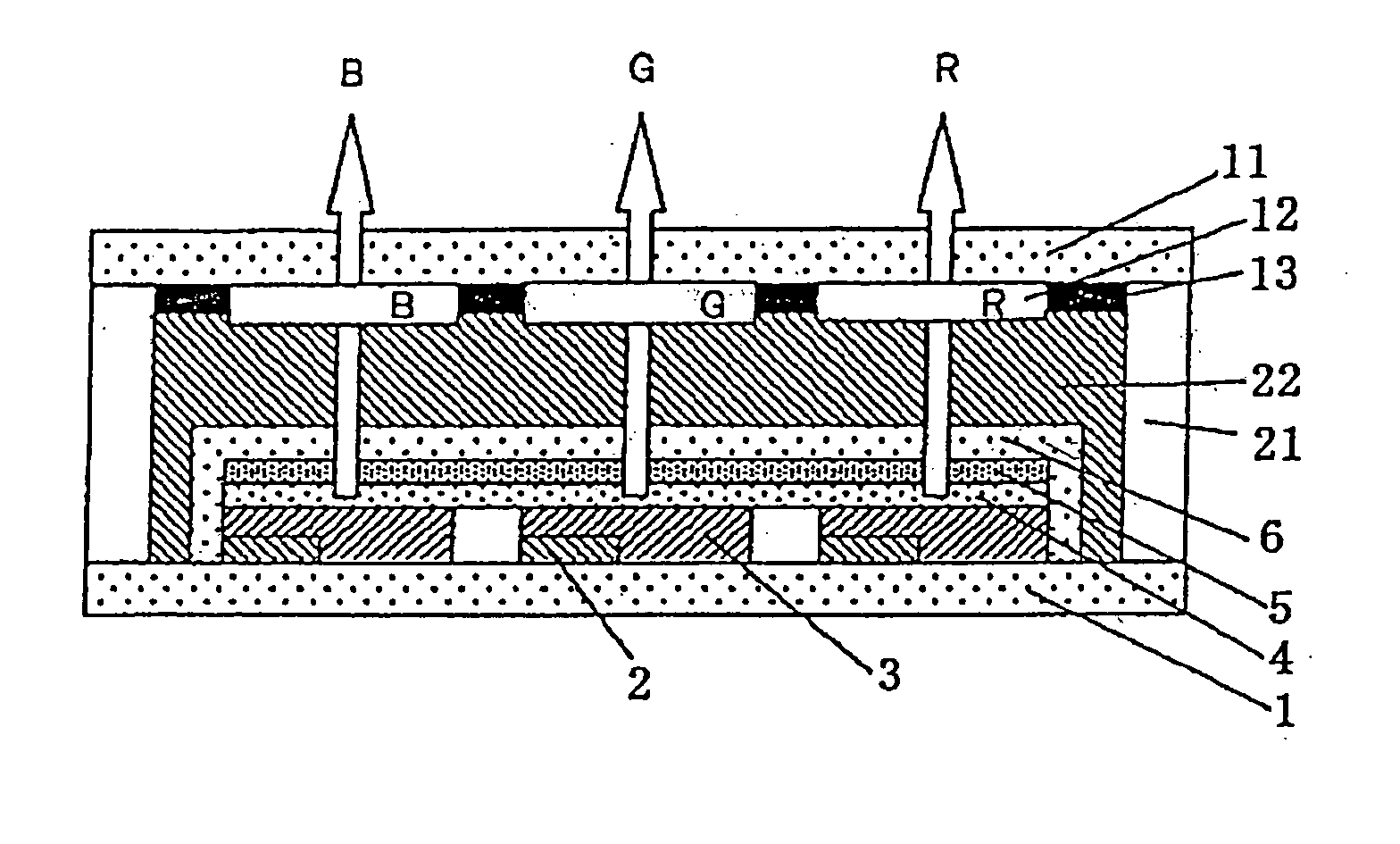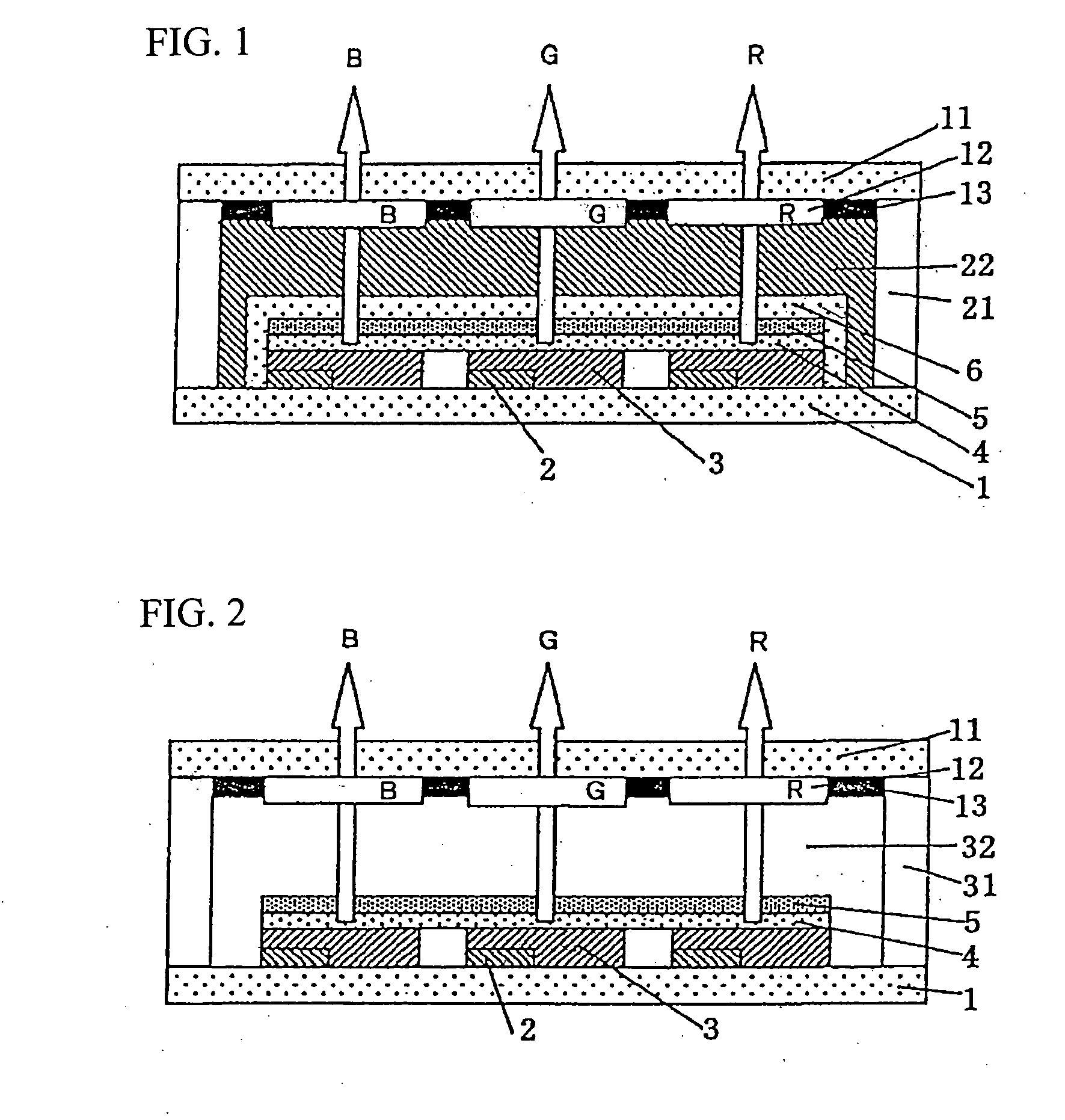Organic EL display and method of manufacturing the same
a technology of organic el and display, which is applied in the manufacture of electrode systems, electric discharge tubes/lamps, and discharge tubes luminescent screens, etc., can solve the problems of difficult to maintain good color reproduction, difficult to achieve efficient and cheap manufacture of el, and difficult to raise the aperture ratio, etc., to achieve stable light emission characteristics, cure in a short time, and infiltration of moisture
- Summary
- Abstract
- Description
- Claims
- Application Information
AI Technical Summary
Benefits of technology
Problems solved by technology
Method used
Image
Examples
example 1
[0064] TFTs 2, anodes 3, organic EL light-emitting layer 4, cathode 5, and protective layer 6 were formed in this order on substrate 1 (a glass substrate in the present example) as shown in FIG. 1. Next, color filters 12 and black mask 13 were formed in this order on transparent substrate 11 (a transparent glass substrate in the present example). The two substrates formed in this way were then subjected to the following process under a dry nitrogen atmosphere (oxygen and moisture concentration both not more than 1 ppm) in a glove box.
[0065] Outer periphery sealing layer 21 using a UV-curable adhesive (made by Three Bond, trade name: 30Y-437), which is an epoxy type material, was formed using a dispenser robot (an adhesive applying apparatus, driven by a XY robot) on an outer peripheral portion of glass substrate 1 on the organic EL light-emitting layer side, and transparent glass substrate 11 was bonded on from the color filter 12 side.
[0066] At this time, outer periphery sealing ...
example 2
[0072] The constitution of the substrates in the present embodiment was the same as in Example 1. However, a visible light-curable adhesive was used for outer periphery sealing layer 21, and a transparent silicone gel material was used for internal sealing layer 22. The visible light-curable adhesive was, for example, Luxtrak LCR0275 (trade name) made by Toagosei Co., Ltd., this being an acrylic material. Moreover, the curing conditions were a wavelength of 400 nm, an intensity of 100 mW / cm2, and an irradiation time of 30 seconds. Such a visible light-curable adhesive is advantageous in terms of the equipment cost, since the irradiation apparatus is cheaper than for a UV-curable adhesive. The transparent silicone gel material was KE104Gel (trade name) made by Shin-Etsu Chemical Co., Ltd., and had a refractive index of approximately 1.45, and a compression modulus of not more than 0.5 kg / mm2.
[0073] According to the present invention, as a result of adopting the constitution describe...
PUM
 Login to View More
Login to View More Abstract
Description
Claims
Application Information
 Login to View More
Login to View More - R&D
- Intellectual Property
- Life Sciences
- Materials
- Tech Scout
- Unparalleled Data Quality
- Higher Quality Content
- 60% Fewer Hallucinations
Browse by: Latest US Patents, China's latest patents, Technical Efficacy Thesaurus, Application Domain, Technology Topic, Popular Technical Reports.
© 2025 PatSnap. All rights reserved.Legal|Privacy policy|Modern Slavery Act Transparency Statement|Sitemap|About US| Contact US: help@patsnap.com


